2023 Trek Fuel EX
Wheel Size: XS: 27.5’’; Small: 27.5’’ and 29’’ options; M through XXL: 29’’; all 29’’ frames also mullet compatible with a 160mm-travel fork
Travel: 140 mm rear / 150 mm front
Material: Aluminum and carbon fiber versions available
Sizes Offered: XS–XXL
Price:
- Aluminum frame w/ Fox Float X Performance: $2,600
- Carbon frame w/ Fox Float X Factory: $3,900
- Complete bikes $3,700 to $10,750
Blister’s Measured Weight: 33.1 lb / 15.0 kg (Fuel EX 9.8 XT, size Large)
Reviewer: 6′, 170 lb / 183 cm, 77.1 kg
Test Location: Western Washington
Test Duration: 4 months
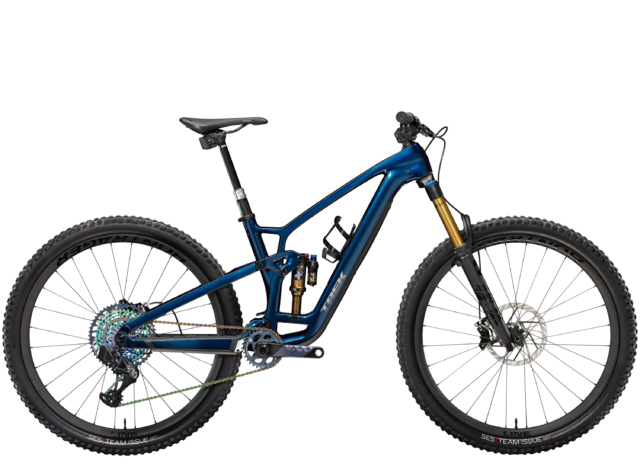
Intro
Trek’s Fuel EX has long been a popular all-round Trail bike, but the new version looks like a major departure from the bike it replaced, with more suspension travel, dramatically longer / slacker geometry, a ton of new adjustability, and a substantial cosmetic overhaul to go with it. There’s a lot to cover here, so let’s get right into it:
The Frame
The sixth-generation Fuel EX includes loads of updates, starting with the wild amount of adjustability on offer. The prior-generation bike had a flip chip to toggle between two geometry settings, which the new bike retains, but it adds an optional offset headset that changes the headtube angle by +/- 1.0°, as well as a second flip chip that varies the amount of progression from the rear suspension — more on all that in a minute.
The overall aesthetic design of the frame has also been overhauled to match the new Fuel EXe lightweight e-bike, but Trek’s longstanding ABP suspension design carries over (now producing 140 mm of rear wheel travel, up by 10 mm from the outgoing bike), as does the option for aluminum and carbon frame construction. No matter which frame material you opt for, you get a storage compartment in the downtube, internal cable routing across the board, ample rubber guards on the seatstay, chainstay, and downtube, and a threaded bottom bracket shell. ISCG-05 tabs are also featured, and tire clearance is stated at 2.5’’. Trek’s sometimes-irritating Knock Block headset is nowhere to be found on the new Fuel EX. All sizes can fit a water bottle inside the front triangle, though the size of the bottle is limited on the smaller frame sizes.
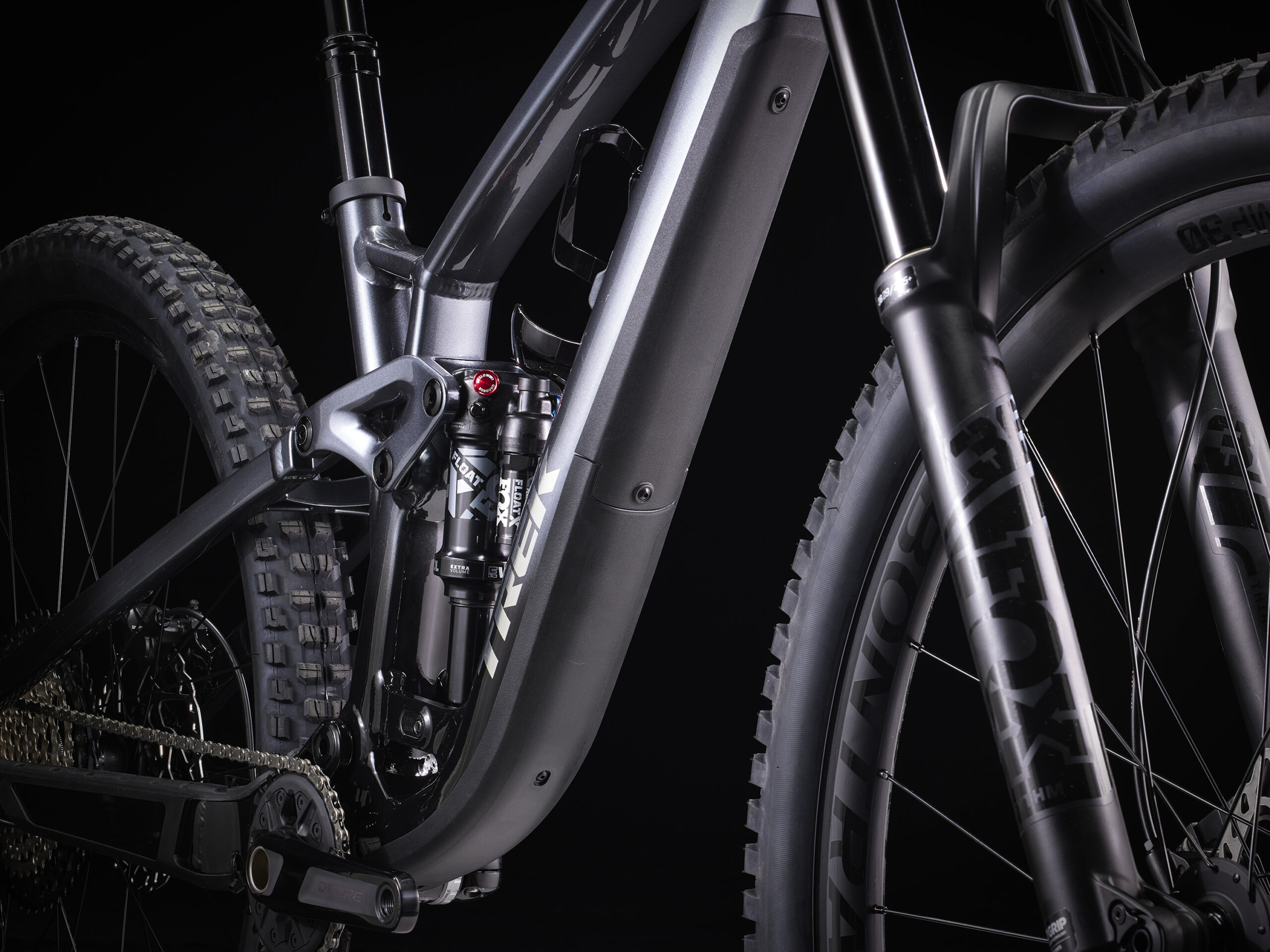
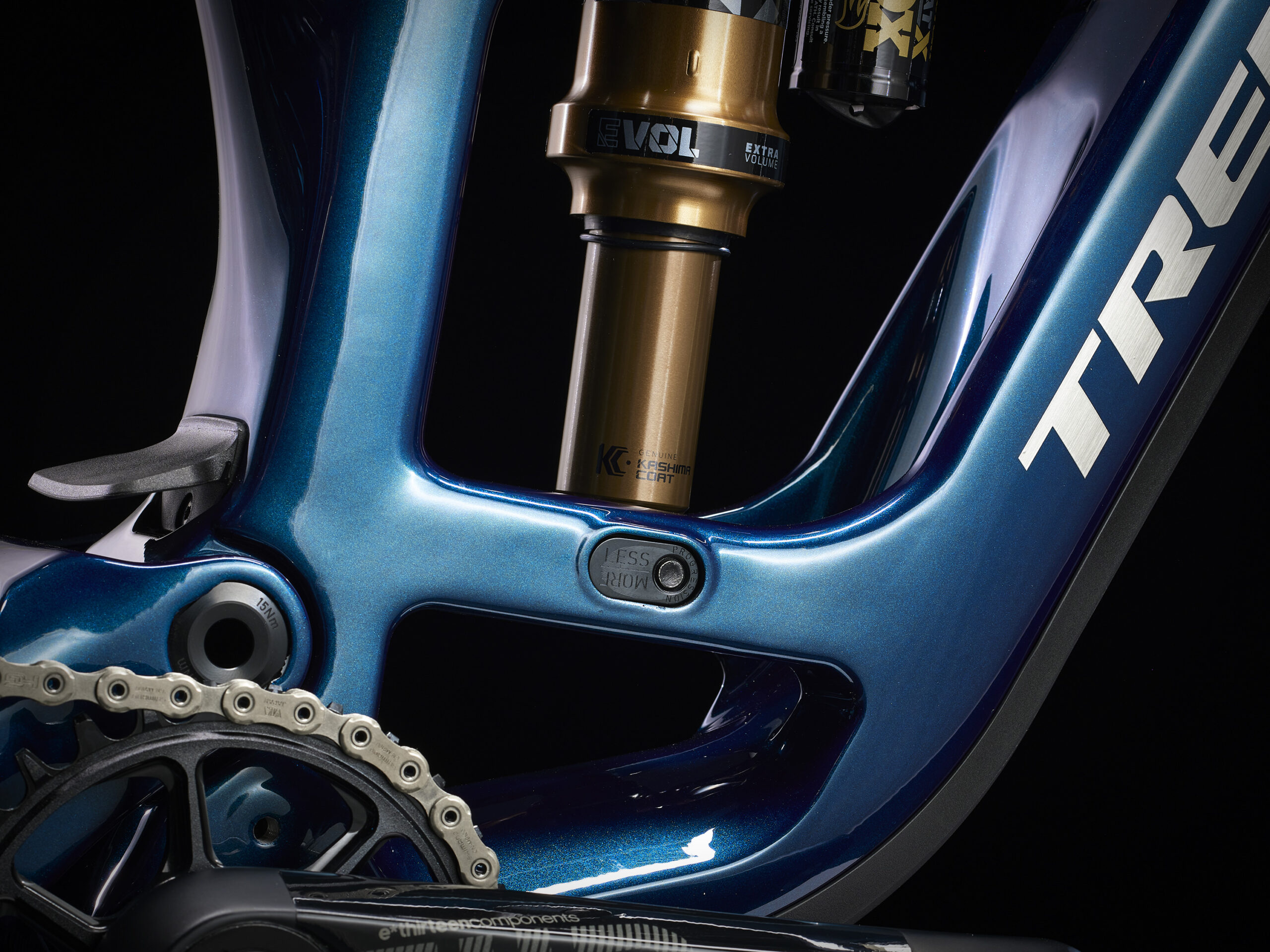
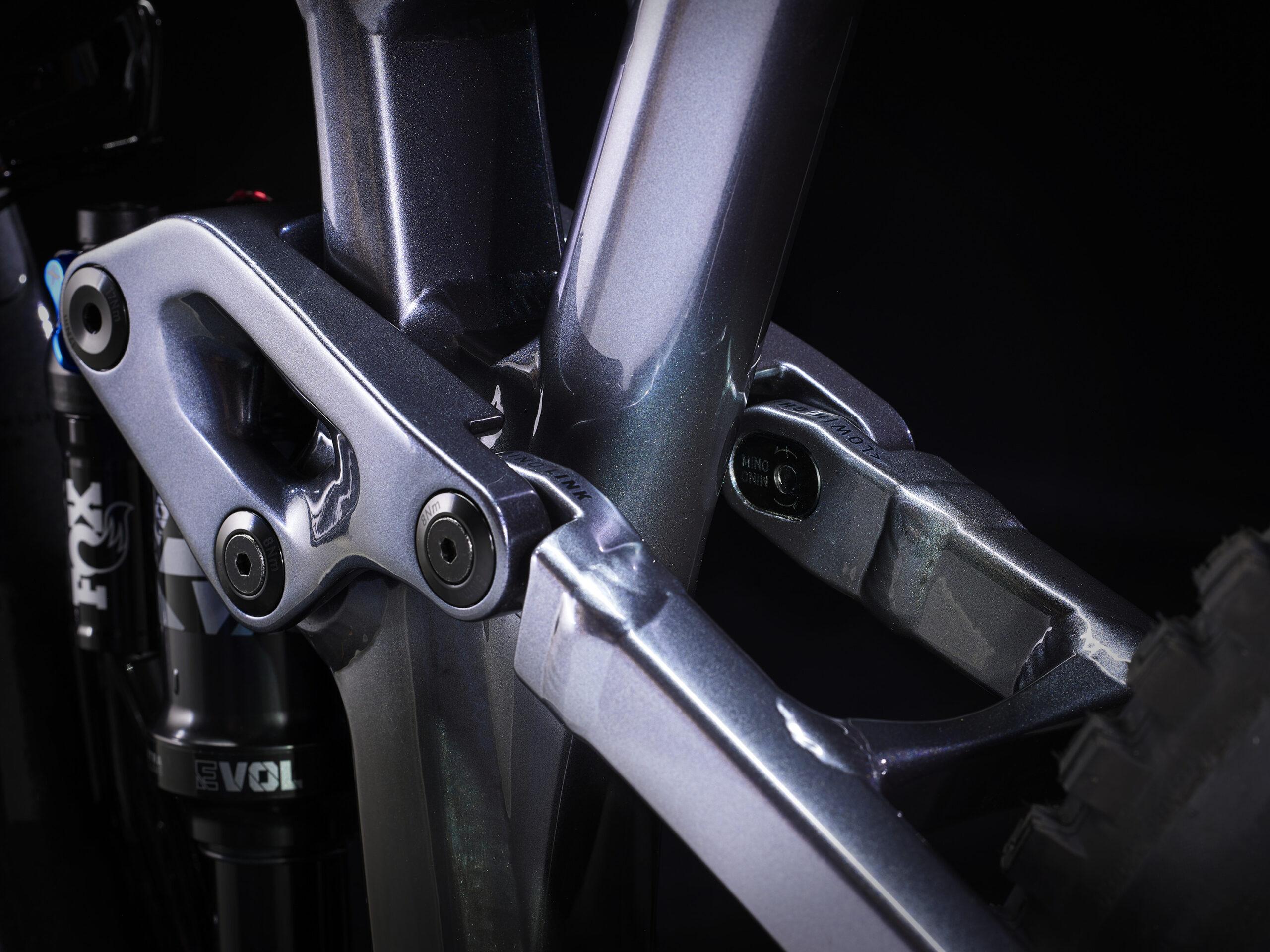
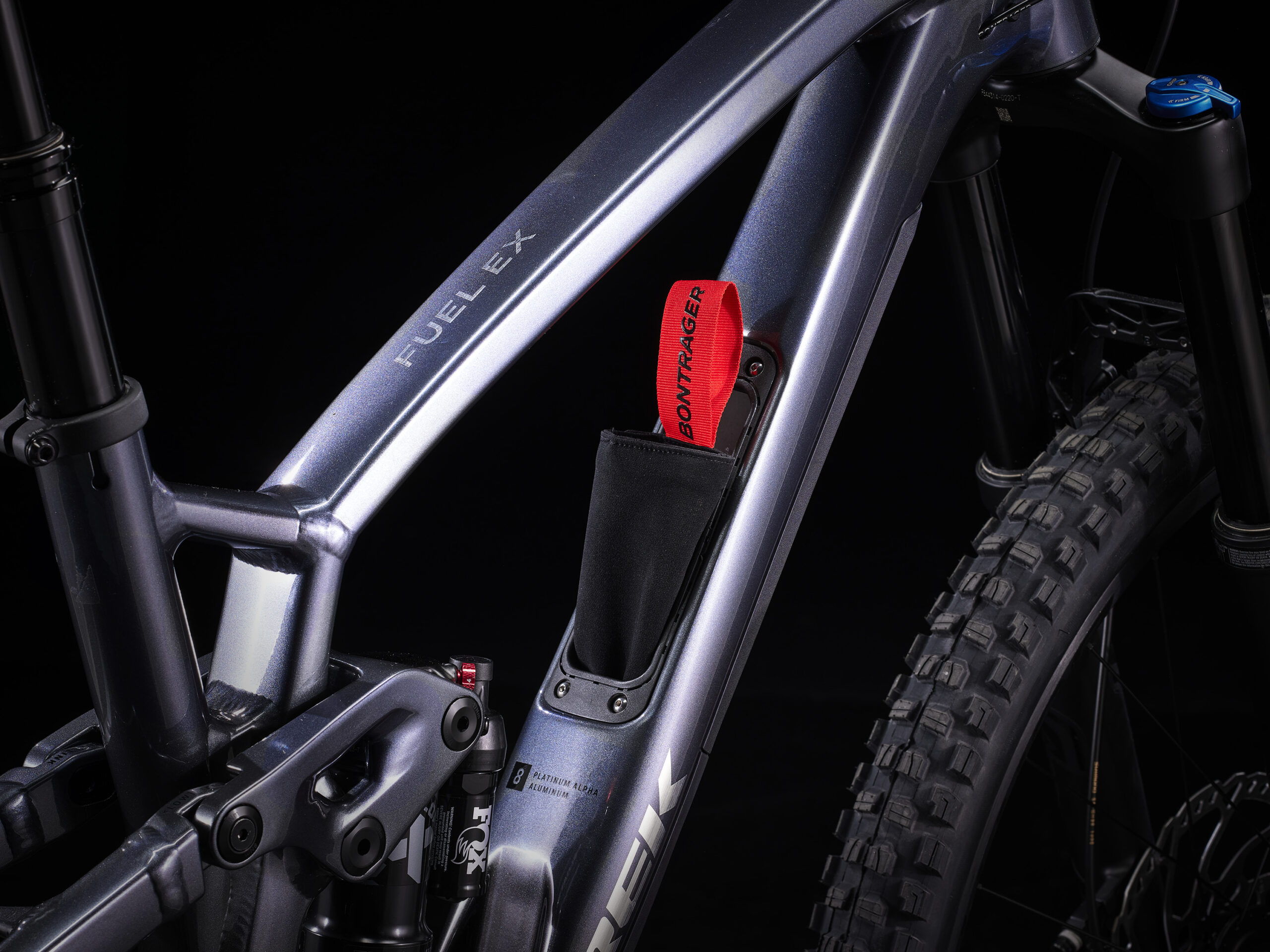
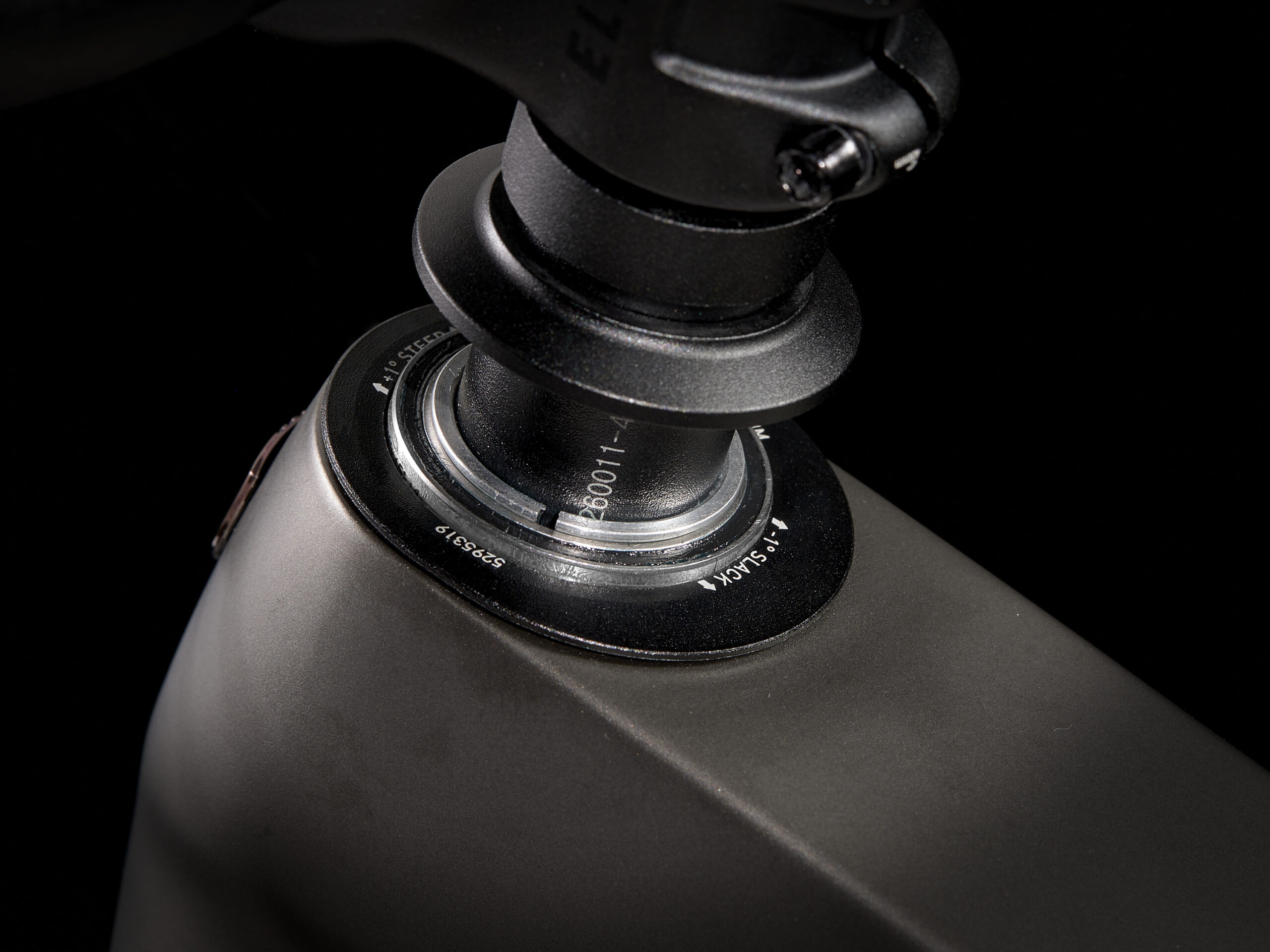
The Fuel EX now has a second flip chip that toggles between two different levels of rear suspension progression, which Trek amusingly simply labels “Less” and “More.” It’s essentially the same system that they introduced on the Session last year. In the “More” progression setting, the leverage curve goes from about 2.9:1 to 2.3:1 in a nearly straight line (~21% total progression); the “Less” setting drops the starting leverage ratio to about 2.75:1 (for ~16% overall progression), and the curve flattens off somewhat near bottom-out.
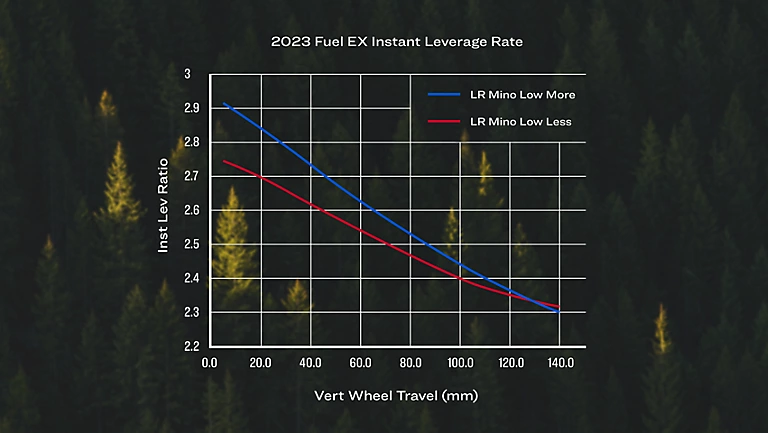
Fit & Geometry
Again, there’s a lot going on here — the new Fuel EX has a huge amount of geometry adjustability between the geometry flip chip (Trek calls it a “Mino Link”), optional offset headset (sold separately), and the option to run the bike with a 27.5’’ rear wheel for a mullet setup (on frame versions designed around a 29’’ front wheel). We’ll get to the full geometry charts in a minute, but to break down the highlights:
- Trek offers the Fuel EX in a whopping seven sizes (XS through XXL, with an “ML” size snuck in the middle). The XS frame is 27.5’’ only, the size Small comes in options for 27.5’’ or 29’’ wheels (each of which gets a dedicated frame — no converting back and forth), and sizes Medium and up are 29ers. All the 29er frames can be run as a mullet with the flip chip in the “High” position (and Trek recommends bumping up to a 160mm-travel fork to raise the bottom bracket a little).
- The headtube angle is 64.5° in what is probably the default position for most people (headset in the neutral position, flip chip in low, which is how Trek will ship the Fuel EX) but you can set it anywhere from 63.5° to 66° depending on how you mix and match the settings with the stock wheel size.
- Going to a mullet configuration on the 29er frames slackens things out to 63.9° in the neutral headset position; you can vary that by one degree in either direction with the offset headset.
- Reach ranges from 400 to 545 mm; all sizes get a 70.8° actual seat tube angle, with the effective measurement starting at over 78° on the smaller sizes and dropping off to 76° by the XXL.
- Chainstay length is 435 mm on the XS through M frames (irrespective of wheel size), 440 mm on the ML and L, and 445 mm on the XL and XXL.
Got all that? The geo chart for the “default” option (stock wheel size, headset in “neutral”, Mino Link in “low”) is below, and you can check out all the other configurations on Trek’s website.

The Builds
Trek offers the Fuel EX in seven complete builds, and as a frame-only in both aluminum and carbon fiber — a welcome and increasingly-rare option these days. As per usual for Trek, all builds with a non-decimal number feature aluminum frames, while the “9.X” builds are carbon fiber.
[Trek is also continuing to offer the Fuel EX 5 with the prior-generation frame as the most entry-level offering in the range but here we’re covering the builds that are offered on the new sixth-generation frame.]
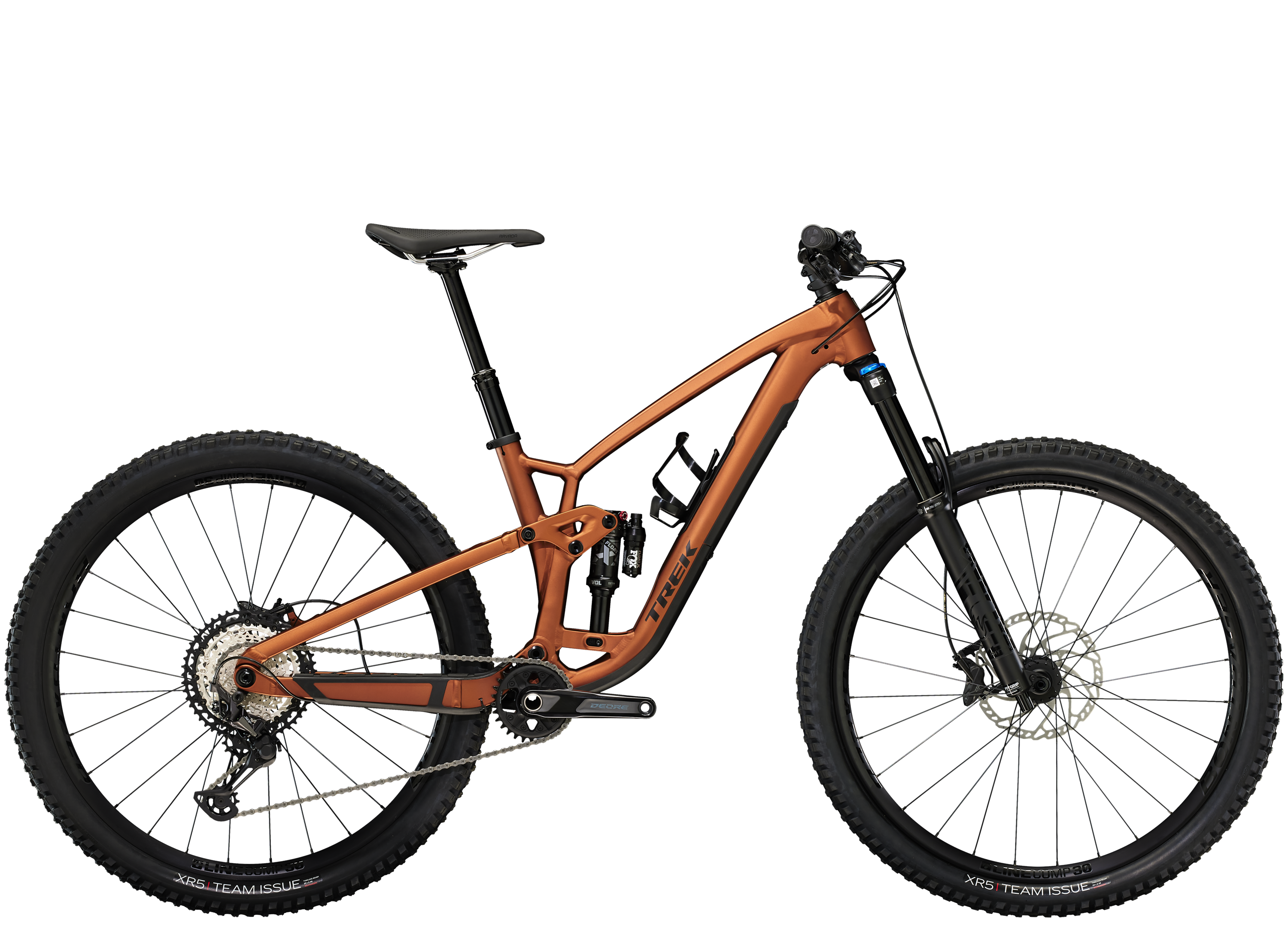
- Fork: RockShox 35 Gold RL
- Shock: Fox Float DPS Performance
- Drivetrain: Shimano SLX shifter, XT derailleur, Deore cassette
- Crank: Shimano Deore
- Brakes: Shimano MT4100 4-piston
- Wheels: Bontrager Line Comp 30
- Dropper Post: TransX
- Fork: Fox 36 Rhythm
- Shock: Fox Float X Performance
- Drivetrain: Shimano XT
- Crank: Shimano Deore
- Brakes: Shimano M6100 lever / M6120 4-piston caliper
- Wheels: Bontrager Line Comp 30
- Dropper Post: TransX
- Fork: Fox 36 Rhythm
- Shock: Fox Float X Performance
- Drivetrain: Shimano SLX w/ XT rear derailleur
- Crank: Shimano Deore
- Brakes: Shimano M6120 4-piston
- Wheels: Bontrager Line Comp 30
- Dropper Post: TransX
- Fork: Fox 36 Performance
- Shock: Fox Float X Performance
- Drivetrain: Shimano XT
- Crank: Shimano XT
- Brakes: Shimano XT 4-piston
- Wheels: Bontrager Line Elite 30 Carbon
- Dropper Post: Bontrager Line Elite
- Fork: Fox 36 Performance
- Shock: Fox Float X Performance
- Drivetrain: SRAM GX AXS
- Crank: SRAM GX
- Brakes: SRAM Code R
- Wheels: Bontrager Line Elite 30 Carbon
- Dropper Post: Bontrager Line Elite
- Fork: Fox 36 Factory
- Shock: Fox Float X Factory
- Drivetrain: Shimano XTR
- Crank: e*thirteen TRS Carbon
- Brakes: Shimano XTR 4-piston
- Wheels: Bontrager Line Pro 30 Carbon
- Dropper Post: Bontrager Line Elite
- Fork: Fox 36 Factory
- Shock: Fox Float X Factory
- Drivetrain: SRAM XX1 AXS
- Crank: SRAM XX1
- Brakes: SRAM Code RSC
- Wheels: Bontrager Line Pro 30 Carbon
- Dropper Post: RockShox Reverb AXS
Some Questions / Things We’re Curious About
(1) The old Fuel EX was looking a bit dated, geometry-wise, but that’s not the case with the new one, at all. So how does it stack up to a lot of the other good mid-travel Trail bikes we’ve been on recently, including the Santa Cruz Hightower, Guerrilla Gravity Smash, and Commencal Meta TR?
(2) And how does the wild adjustability of the new Fuel EX pan out on trail? Does it feel like a coherent total package across the range of options, or does it start to get a little quirky at the fringes?
FULL REVIEW
Trek has historically been a little on the conservative side when it comes to the geometry and design of their Trail bikes, so when the new sixth-generation Fuel EX launched last year, it came as a surprise — a 140mm-travel Trail bike that could go as slack as a 63.5° headtube angle, with wild new design language, and a ton of adjustability. Now having spent much of the winter and early spring on the new Fuel EX, it’s indeed quite adaptable and well-rounded — and a bike that we think could work really, really well for a lot of folks.
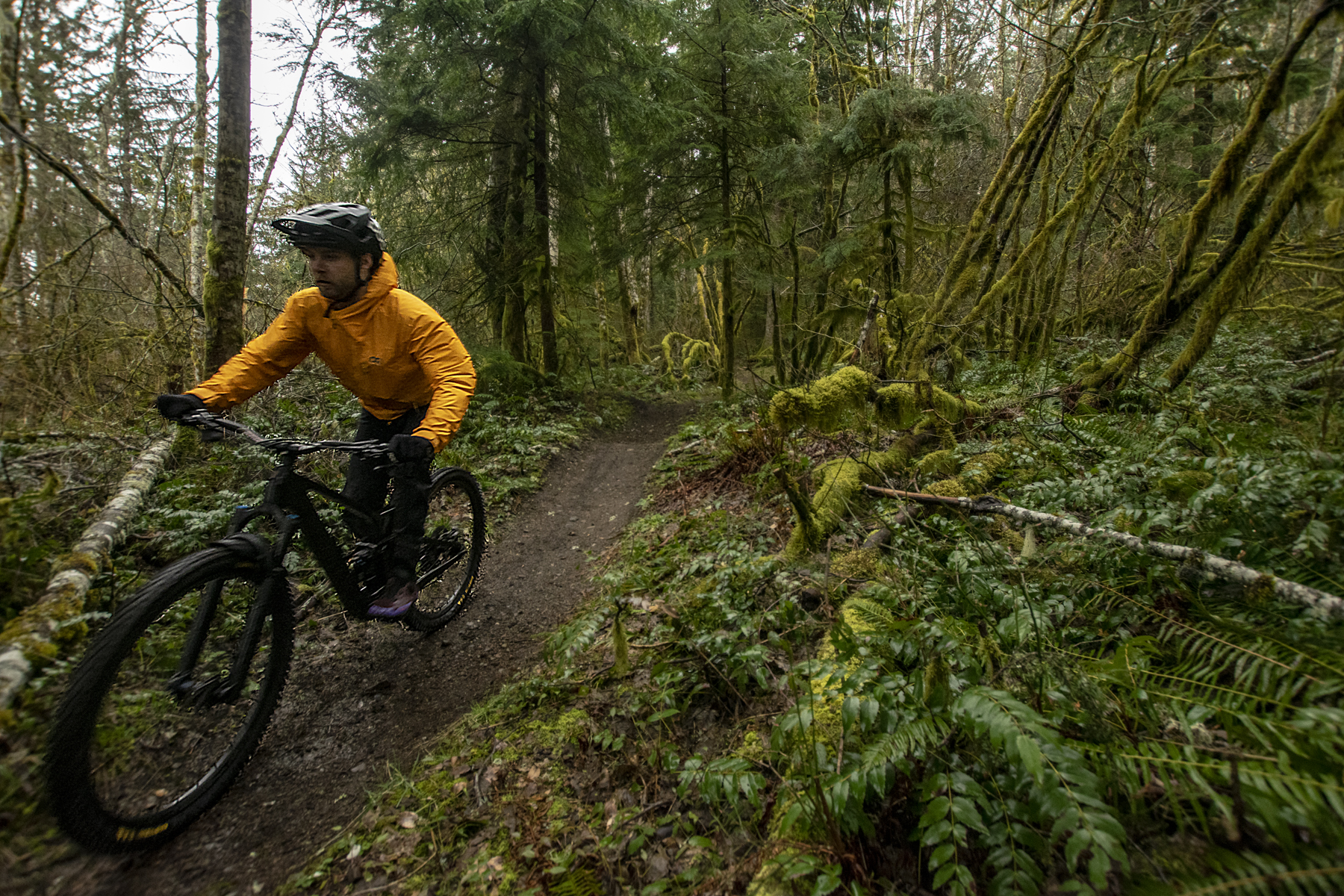
Fit & Sizing
Trek offers the Fuel EX in seven sizes — XS through XXL, plus an “ML” in the middle — but despite the huge size range and relatively tight steps between sizes (particularly around the middle of the range), Trek’s recommended sizing puts me (6’ / 183 cm tall) squarely on a Large frame, with no overlap onto the ML or XL sizes. And at least for my preferences and proportions, that was definitely the right call. I had an easy time getting comfortable on the Large Fuel EX — and with reach, stack, and effective top tube numbers that are all in my typically preferred range, that wasn’t a surprise.
Interestingly, Trek also lists a recommended inseam range on their sizing chart, and despite being at the bottom end of the range (at 33’’) for the Large frame, I had way more than enough room to swap in a 200 mm dropper post in place of the 170 mm one that came stock. Trek does put a 200 mm post on the XL and XXL frames, and I’m sympathetic to the idea that it’s arguably better to err on the side of shorter (so that you don’t have folks who need to swap the post to be able to ride their desired frame size — it’s easier to live with a shorter-than-ideal one than one that’s too tall, for sure). But I wanted a 200 mm post, and I bet a lot of folks on the Large frame will feel similarly.
The Fuel EX’s massive geometry adjustability is much more focused on handling and ride characteristics than fit, and my overall take on fit and sizing didn’t really change much across the range of options (which I’ll cover in a lot more detail below). There are, of course, changes to the reach, stack, and effective top tube as you tweak things via the Fuel EX’s built-in geo adjustments, but they weren’t dramatic enough to change my assessment of the overall fit. The one slight caveat there is the stack height — the Fuel EX’s is a little on the shorter side, and the high flip chip and/or slacker headset settings both reduce it a little more. It wasn’t so short as to cause me real problems getting the fit sorted out, but I did need to swap in a higher-rise bar to help out, particularly in those lower-stack-height configurations to get things high enough — but as I’ll explain below, I wasn’t a fan of the stock bar and stem anyway, rise considerations notwithstanding.
Climbing
A lot of Trek’s Trail / Enduro bikes in recent years — including the prior-generation Fuel EX — have skewed more toward the compliant, grippy end of the spectrum at the expense of some efficiency and snappiness under power. The new Fuel EX flips that around. It’s quite an efficient, quick-feeling bike under power, but does a notably good job of keeping a solid chunk of the ultra-planted, grippy nature of the earlier iteration — and again, that’s despite the new Fuel EX gaining 10 mm of travel at both ends.
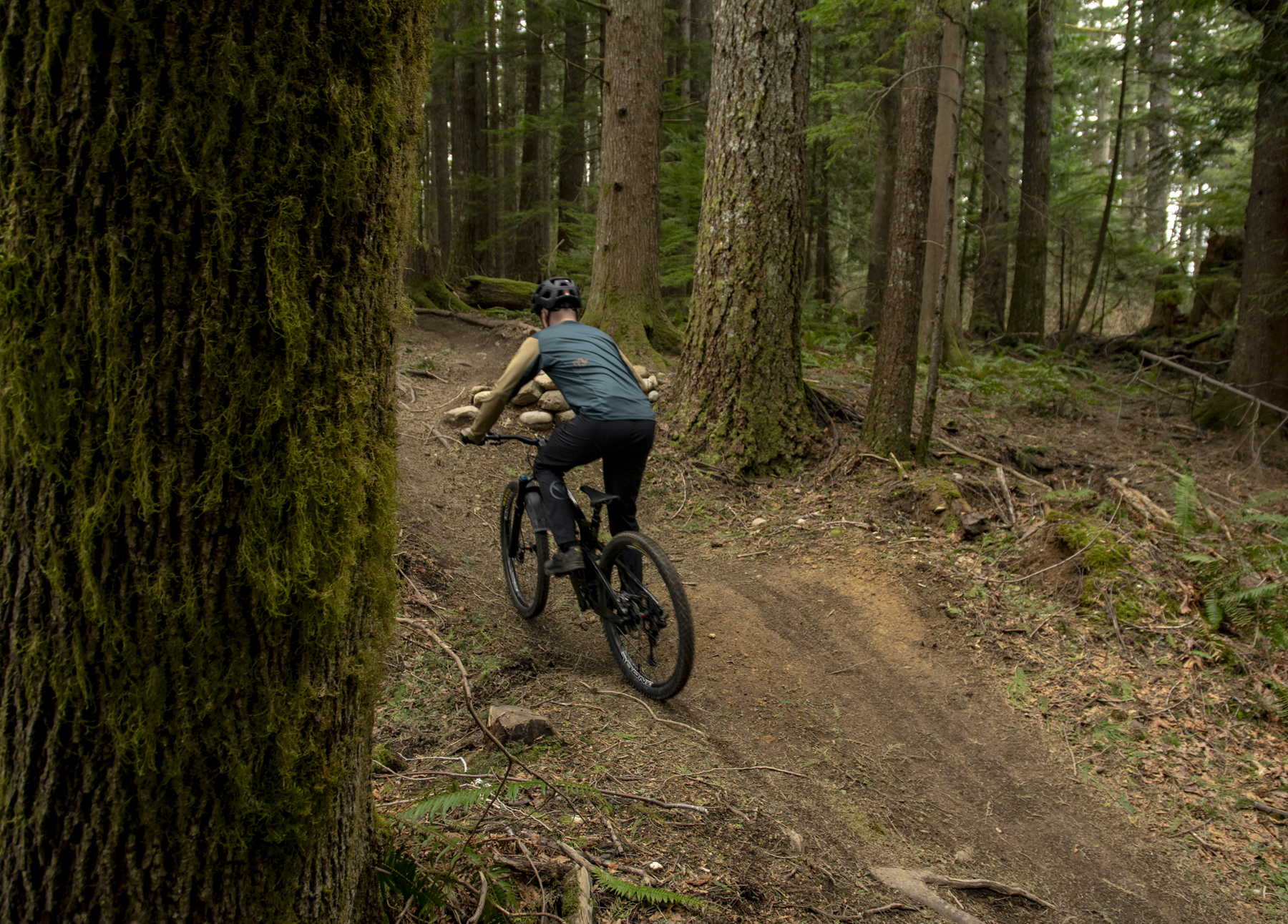
That’s not to say that the Fuel EX is way off the end of the spectrum in terms of efficiency or anything like that, but I’d put it a solid notch above average for a 140mm-Travel trail bike, and it pulls that off while still being entirely respectable when it comes to grip and compliance under power. It’s a really nice recipe for a well-rounded, versatile bike, and while folks who specifically loved the ultra-plush feeling ride of the earlier Fuel EX might feel like the new one has lost a little bit of the magic, I think the new Fuel EX’s suspension performance under power feels more coherent for the bike’s intended use and is going to work better for more people.
In terms of low-speed handling and technical climbing prowess, the Fuel EX’s wildly adjustable geometry makes it a lot harder to give a concise single answer as to how it performs. I’m mostly going to focus on the neutral headset setting since that’s how the bike ships, and I think it’s how most folks are going to run the Fuel EX (and for what it’s worth, it’s also how I preferred to run things), but I’ll touch on the geometry settings and how they change things in more detail below.
Anyway, around the middle of the range of geometry settings, the Fuel EX’s low-speed handling feels quite intuitive and easy but biased a little more toward offering a big sweet spot that makes it easy to keep both wheels planted and gripping, at the expense of a bit of agility at really low speeds, especially as compared to the prior-generation Fuel EX. The new one is still a pretty good technical climber and feels a lot easier to just sit on and grind without having to work to keep the front wheel planted on really steep climbs, but also isn’t quite as easy to snake through really tight spots. Running the steeper, higher geometry settings speeds up the low-speed handling and adds to pedal clearance in really chunky sections but, of course, comes with tradeoffs in higher-speed descending performance. Again, more on the various geometry settings below.
But overall, I think the Fuel EX is an excellent climber for a 140mm-travel Trail bike. The pedaling position is well sorted, striking a nice balance between a steep-ish seat tube without going so far down that road as to feel awkward pedaling around on flat ground. The suspension feels efficient first and foremost but still offers good traction for that level of efficiency and pep under power, and its handling at lower speeds is predictable and intuitive. It’s quite good, especially if you’re inclined to favor a slightly more efficient pedaling platform over the most compliant and grippy suspension performance under power, but the Fuel EX is overall well-rounded and should suit a lot of people nicely.
Descending
On the way back down, the Fuel EX is, again, a really well-rounded, versatile bike that feels at home on a fairly wide spectrum of trails. Its massive adjustability (more on that later) doesn’t hurt either, but I don’t think that most folks are going to be toggling between different settings all that often — rather, I think they’re more likely to find a preferred combination and stick with it.

But especially in the middle part of the settings range (as I’ll explain more below, I found the low flip chip / neutral headset setting to be my personal favorite), the Fuel EX strikes a nice middle ground where it’s solidly stable at speed for a 140mm-travel Trail bike but doesn’t feel like it gives up a huge amount of agility to get there. It’s not the absolute quickest handling ~140mm-travel bike in very tight, super low-speed spots, but can still navigate them just fine, and once you’re moving just a little bit, the Fuel EX’s handling feels super intuitive. Its sweet spot in terms of preferred body positioning is notably wide, especially for what is not a wildly long bike overall, and the Fuel EX hits what I think is a really nice blend of being simultaneously moderately stable while also being reasonably quick handling when you need it to be.
And especially in the lower geometry flip chip setting, the Fuel EX corners really, really well. It offers a combination of having a big sweet spot and a lot of room to move around on the bike — in a way that I tend to associate with longer, more stable Enduro bikes — but does so without being as much work to muscle around as those sorts of bikes; this serves the Fuel EX especially well there. It’s not the absolute easiest bike when it comes to slashing the rear end around and oversteering all over the place, but it’ll do that with a little input, and really shines if you’re more inclined to load up the bike through the pedals and carve your way through corners.
The Fuel EX also feels notably plush and cushy in terms of its suspension performance. As I’ll get into more in the section on the build, below, I think a lot of that is down to the rear shock tune as opposed to anything inherent to the frame itself, but the Fuel EX offers a ton of rear-wheel grip over smaller chatter and doesn’t need to be going very fast or hitting stuff hard for its suspension to open up and feel very forgiving and comfortable. The flip side of that is that I did feel like the stock suspension was a bit quick to blow through the middle part of its travel when speeds picked up, especially in choppy, high-speed sections with a lot of sharp mid-sized hits. I’ll grant that this mostly showed up when I was riding the Fuel EX on trails that most folks break out a bigger Enduro bike for, and that I tend to favor firmer compression tunes and more support over the absolute maximum grip and compliance. So I think a lot of folks will be fine with (or specifically psyched about) the lighter compression damping. But it does feel notably light, especially at higher shaft speeds.

While this doesn’t quite fit cleanly into the “Climbing” or “Descending” categories, the Fuel EX really shines in rolling, varied terrain with a bunch of grade reversals and short ups and downs. I’d attribute this to its combination of (1) good pedaling efficiency for those punchy climbs, (2) well-balanced handling with a huge sweet spot in terms of body positioning that helps avoid getting caught out when the bike hangs up in an awkward spot, and (3) notably good traction and suspension compliance at lower speeds, when you’re not able really load up the bike to generate that grip. And while there are a lot of bikes out there that I’d say similar things about — the Santa Cruz Tallboy comes to mind — what sets the Fuel EX apart is that it’s more stable and capable when you point it down a longer, steeper descent than most of the (generally more compact, shorter-travel) bikes that I’d put in a similar camp on the rolling, punchy trails.
Adjustability
The large amount of geometry adjustability on the Fuel EX is an interesting part of the story of the bike. In short, I think Trek has done a good job of offering a host of adjustments that make substantial differences to how the bike rides, without making the range of settings so broad as to make it easy to wind up in a weird combination that rides poorly.
The two flip chips (a.k.a. “Mino Links” in Trek’s parlance) do about what you’d expect. The low setting makes the Fuel EX feel a little more stable at speed and a little slower handling in tight spots, but the bigger difference is that it puts the rider noticeably lower in the bike — eight millimeters of bottom bracket height is quite a bit — and results in feeling more “in” the bike, particularly in higher-speed corners, at the expense of some pedal clearance and some ease of initiating corners by leaning the bike over with more modest input. The “More” progression setting on the Mino Link (which, again, is separate from the geometry-adjusting one) makes the suspension ramp up a little more aggressively and feel more supportive deep in the travel than the “Less” progressive setting, but that difference is comparatively modest.
I also experimented with the optional offset angle-adjusting headset (which is sold separately for folks who want it) and those results were similarly as expected — slackening the headtube made the Fuel EX more stable at the expense of some nimbleness at lower speeds and also required a slightly more forward weight bias to keep the front wheel gripping properly; going steeper makes the low-speed handling quicker but diminishes the Fuel EX’s stability and composure when you start going faster.

I think Trek has done a nice job of working out adjustment ranges that make a real difference in how the bike rides without going so off the deep end as to introduce particularly quirky behavior at the ends of the spectrum, but I had the hardest time with the steeper headset setting, because the chainstays started to feel a bit long relative to the front-center of the bike. In that configuration, the Fuel EX both preferred a more centered, upright body position to not get too far out over the front end and felt like its sweet spot got substantially smaller. Folks who specifically want a very quick-handling ~140mm-travel Trail bike might still find something to like here, but I think the vast majority of people for whom the Fuel EX is a generally good fit are going to be best suited by the stock neutral headset position. And indeed, for the bike’s intended use, the neutral headset, low / more progressive Mino Link arrangement was my preference most of the time.
Though I don’t think all that many people really need to worry about it, I’m still a fan of the fact that Trek offers a clean, easy-to-use offset headset for the bike for the tinkerers out there. The lower cup does require a headset press to install, so it’s not a super quick-and-easy change that many people are going to want to do often, but it’s not hard to do a couple of times to experiment, and the drop-in top cup never gave me any issues with creaking or anything else.
I also tried a mullet configuration on the Fuel EX briefly, but only in the neutral headset position and with the fork still at the stock 150 mm of travel, rather than the 160 mm configuration that Trek recommends. As per usual for bikes that can toggle back and forth, the mixed-wheel layout made the Fuel EX feel a bit quicker handling (particularly in mid-speed corners), a little less stable in a straight line, and made the rear end feel shorter and easier to slash around. None of those differences were huge, and I personally got along better with the full 29’’ setup (as tends to be my preference) but the Fuel EX feels like a very viable mullet candidate for folks who are inclined to go that route.
The Build & Frame
I reviewed the Fuel EX in the mid-range 9.8 XT build, and for the most part, it’s pretty nice. The Shimano XT drivetrain and brakes are great, and this pair of brakes didn’t give me much trouble with wandering bite point, as is often an issue on Shimano’s brakes in general. Carbon wheels are a rarity at this price point ($6,250), and the Fox 36 / Float X suspension combo is solid, too.
But at least for my preferences, I found the compression tune on the rear shock to feel pretty light, particularly in terms of higher-speed damping. The stock shock feels quite plush and cushy when you start hitting things harder, but gives up more support and composure than I would have preferred, particularly in high-speed, choppy sections of trail. I spoke with Trek about my thoughts re: shock tune, and their response was that they tuned their shocks to work as well as possible for as big a swath of the riding public as they could manage, but that there are inevitably tradeoffs in trying to cater to riders across a range of weights and ability levels — and they’re certainly right about all of that. My take is simply that the Fuel EX’s shock tune feels oriented more toward the lighter-damped, more plush end of the range, and that’s absolutely going to be the right call for at least some folks. Heavier / more aggressive riders, or those who just know that they tend to like firmer compression damping might just need to plan on a shock upgrade or re-valve to get the damper support that they want out of the Fuel EX, and I’m personally in that camp.
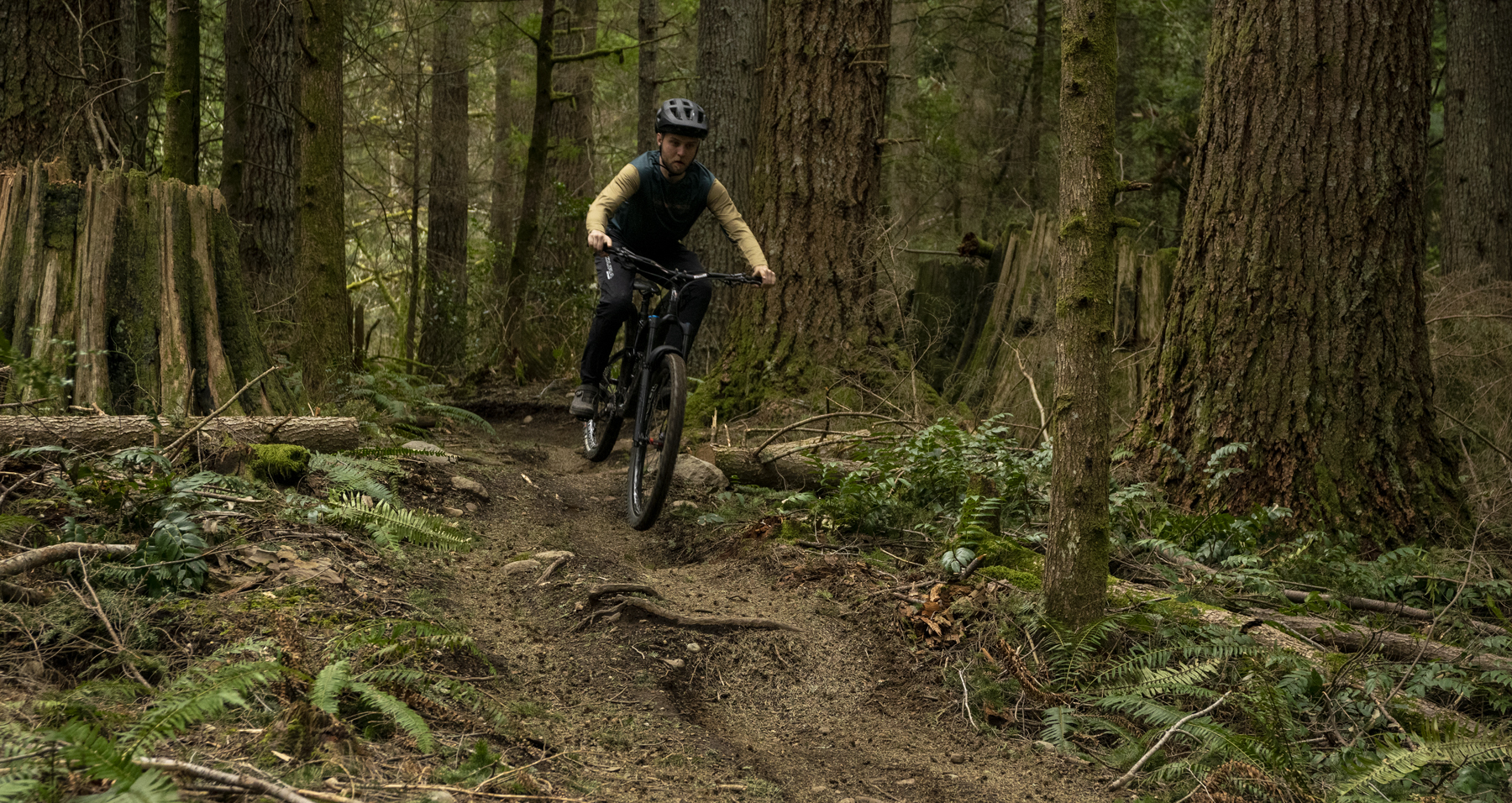
I also was emphatically not a fan of the one-piece Bontrager RSL bar and stem combo. It (arguably) looks cool and is very, very light, but the one-piece design means that there’s no way to adjust the handlebar roll and thus the effective sweep, and I found the angles of the stock setup to be quite uncomfortable. Granted, bar roll / sweep is a thing that I think I’m probably unusually picky about, but it really didn’t work for me. Happily, swapping in a conventional bar and stem is easy (and is something that I wind up doing on a lot of review bikes — like I said, I’m picky), but the one-piece design limits adjustability and I think is going to cause more folks problems there than conventional designs.
The in-frame storage on the Fuel EX generally works fine, but the opening isn’t all that big and it’s a bit hard to stuff larger stuff (e.g., a light jacket) in there. It also gave me what has to be the funniest noise issue I’ve ever encountered on a review bike. The Fuel EX that I tested had been ridden prior to getting sent our way, and when I started spending time on it, there was a muffled but noticeable rattle coming from somewhere around the downtube or bottom bracket area. As it turns out, it was a dried-out and quite-hard strawberry gummy that was rattling around in the bottom bracket shell after escaping whatever some previous rider had it stored in.

I don’t think there’s a big moral to the story here, other than to keep whatever you put in your downtube storage in some sort of pouch, whether it’s the included one or a different option of your choosing. In this case, it was mostly just amusing. The only real (but very minor) build quality note I’ve got is that the upper downtube protector started to sag a bit after a little while and looked a little ragged, but that’s hardly the end of the world.
I don’t mean for that to sound like a lot of complaining — overall, I think the build on the Fuel EX 9.8 XT is quite sensible, and generally a solid value for the money. Commenting on the couple of things where I saw room for improvement just feels a lot more noteworthy than rehashing that, yes, the Shimano XT drivetrain still works really well, etc. And while the Fuel EX 9.8 XT that I rode is a pretty good value for money, I think the 9.7 build might actually be the best bang-for-buck option in the line. On the 9.7, you get the same carbon frame, functionally very similar suspension (the Fox 36 Rhythm uses the older-generation chassis and is a little heavier than the newer 36 Performance on the 9.8 XT, but shares the same basic spring and damper design), and a slightly heavier but still strong-performing Shimano Deore / SLX / XT blend drivetrain. The loss of the carbon wheels is the biggest difference between the two at the end of the day, but for $1,550 in savings at retail price, I can live with that.
Comparisons
Here’s how the Fuel EX compares to several other bikes in its class. If you’re curious about other models, aren’t sure where to start in the first place, or have any other gear questions, you can Become a Blister Member, send us a message via the Member Clubhouse, and we’ll help you out one-on-one.
I don’t have a ton of time on the prior-generation Fuel EX (which is still available from Trek, at least for the time being) but I’ve ridden one enough to know that the new sixth-generation version is pretty different. The new Fuel EX is much more stable and composed at speed, less nimble at low speeds in tight spots, and despite gaining 10 mm of suspension travel at both ends, probably pedals more efficiently. The new one is significantly “more” bike in most respects apart from pedaling efficiency.
This is one of the better comparisons here, but there are still some real differences. In the more middle-of-the-range geometry settings, the Fuel EX is a touch more stable at speed but a little less agile than the Hightower. The Fuel EX also pedals more efficiently but doesn’t offer quite as much traction under power.
But none of those differences are great enough to make them unreasonable bikes to cross-shop against each other or make it super cut-and-dried as to who should be on which bike, and they generally feel targeted at similar types of riding and use cases — just with slightly different characteristics. It’s also worth noting that their sizing breaks are a bit different, and there are likely going to be folks who simply fit one better than the other since, for example, the Large Fuel EX fits a little bigger than the Large Hightower.
Pretty different. The Fuel EX pedals a lot more efficiently than the Bronson but feels significantly less plush and cushy on the way back down. The gap in stability between the two isn’t as large as the differences in suspension performance might suggest, though the Bronson is still more bike on that front, too. And even with the Fuel EX set up as a mullet, the Bronson feels more oriented toward a riding style that favors slashing the rear end around and riding with more weight over the front end to facilitate that.
This one’s interesting — the Smuggler and Fuel EX fit and handle pretty similarly, but feel quite different in terms of their suspension performance. The Smuggler feels much more supportive and lively whereas the Fuel EX is more plush and cushy, at the expense of some composure in really fast, rough sections (which, again, I think has more to do with the shock tune than anything to do with the frame itself). Despite the Fuel EX’s extra suspension travel, the two are pretty close in terms of pedaling performance and efficiency, though the Fuel EX definitely has an edge in terms of traction and grip under power.
Pretty different. These two are actually pretty close in terms of where they land on the super-quick handling to super-stable spectrum but differ substantially in a lot of other ways. The Ripmo has more suspension travel, and definitely feels like it — it’s more composed when plowing into rough sections of trail at speed, in particular. But its suspension also feels firmer and more supportive, as compared to the more plush and cushy Fuel EX. The Rimpo also has more of a notable preference for being ridden with a forward stance with some significant weight over the bars, whereas the Fuel EX feels happier being ridden more centered / neutrally, and has a bigger sweet spot in terms of body positioning — though I think some of that is driven by the fact that the Large Fuel EX fits just a bit bigger than the Large Ripmo we reviewed; the Fuel EX fits me better, personally, but that’s going to vary rider to rider.
Overall, the Ripmo feels like a bit more game-on, hard-charging bike whereas the Fuel EX is happier taking things easier, while still having a solid top end when you decide to open it up. In terms of pedaling efficiency, they’re not too far off from each other but I’d give a slight edge to the Fuel EX.
Similar story to the Ripmo, but to a greater extent. The Arrival is a much more game-on, descending-focused bike than the Fuel EX and takes more speed and aggression to come alive, but rewards that sort of approach with an impressively stable, composed ride for a bike that’s pretty quick handling (again, when you’re on it and riding hard). The Arrival is also much more supportive and lively in its suspension performance, but less plush and cushy than the Fuel EX.
Also pretty different. Despite having 10 mm more rear wheel travel, the Occam LT pedals even better than the Fuel EX and feels especially sharp-handling and quick, whereas the Fuel EX is a little more stable at speed, especially in rougher terrain, but not as agile. The Fuel EX is also much more plush and forgiving in terms of its suspension performance at lower speeds but is far less nimble and pop-y than the Occam LT.
In terms of its handling and ride character, the Occam LT feels like a shorter-travel bike than it actually is, just one that’s got the extra compliance of a 150mm-travel bike when you really need it. The Fuel EX feels like “more” bike despite having a touch less suspension travel.
The Rallon, on the other hand, is way more bike than the Fuel EX — more stable, more composed in rough sections, not as quick handling, and so on. It’s one of the most versatile, most efficient-pedaling Enduro bikes we’ve ever tested, but it still is a modern Enduro bike. The Rallon is impressively close to the Fuel EX in terms of pedaling efficiency, given that it’s got 20 mm of extra travel at each end, but the Fuel EX still wins out there. The two aren’t too far off from each other in terms of small-bump sensitivity, either, but the Fuel EX feels more plush and eager to use a lot of its travel at lower speeds and with mellower riding, whereas the Rallon is a lot more composed and supportive when you start hitting stuff harder.
The Fuel EX and Rallon do remind me of each other somewhat in terms of the way they fit and in the cornering styles they excel at most strongly — both are especially good when loading the bike up through the pedals, getting both wheels to grip hard, and carve through mid-speed, well-supported corners in particular — but the Rallon is much more bike in most respects.
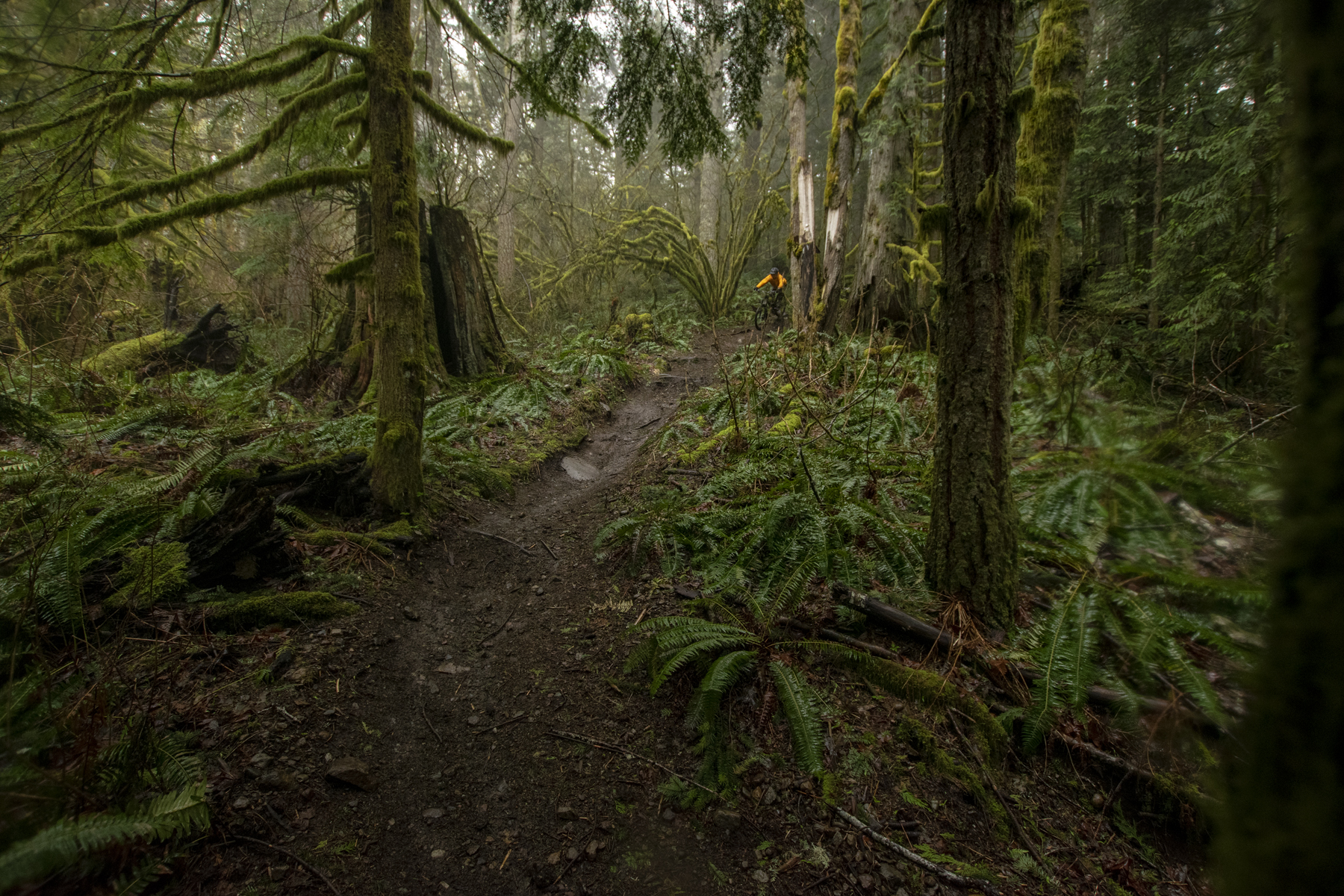
Who’s It For?
The new Fuel EX is an excellent all-rounder Trail bike, especially for people who favor a slightly softer, more supple suspension setup but still want a bike that pedals quite efficiently. It’s very versatile in terms its preferred riding style(s), has a big sweet spot in terms of body positioning and approach, and offers a really nice blend of solid stability and reasonably quick handling, plus a whole lot of adjustability to dial it in to your liking. Heavier and/or more aggressive riders might find the stock suspension tune to be somewhat lightly damped for their preferences — and I’d count myself among those people — but if you’d prefer a more plush, cushy ride, or are willing to put some work into getting the suspension tuned, there’s a lot to like here.
Bottom Line
The new Fuel EX is an especially well-rounded and versatile Trail bike that we can see working for a lot of different riders — especially since it has such a broad range of frame adjustments on offer. Riders who tend to favor firmer, more supportive compression tunes are likely to find the stock setup to be a bit lightly damped, but plenty of other folks are likely to appreciate the plush, smooth ride. And though I didn’t have the opportunity to test this hypothesis, I don’t think there’s anything inherent to the frame design that would stop folks who want a firmer compression tune from getting there via aftermarket tuning or a shock swap.
I want to be careful not to make too big a deal out of the shock tune — it wasn’t quite what I wanted, but I also definitely tend to prefer firmer, more supportive compression damping and I think that the stock setup will work great for a ton of people. And I really, really like the Fuel EX otherwise — it’s an impressively versatile bike that I was able to have a great time riding on a ton of different sorts of trails and one that I would be happy to take most places in the world as my one bike and not feel like I was missing out. And it’s one that I’ve already recommended to a bunch of Blister Members who’ve reached out looking for an all-rounder one-bike quiver, because the Fuel EX is a really good one.

Great review, did you manage to get the 200mm dropper in all the way? I am thinking of getting a 200 on my size large.
Yeah, pretty easily. I run a ~780 mm seat height (center of BB to top of the seat, on 170 mm cranks).
Trek has a good seatpost insertion guide in the service manual on their site. It is worth noting that the aluminum frames have a little less insertion than the carbon ones — 265 mm vs. 281 mm for the size Large of both.
Hey David, you mention the relative ease of blowing through the middle of the shock stroke in rougher terrain—was this in the more or less progression setting? And does this setting change make a difference? As a slightly larger rider (210-215 lbs riding weight), I’m worried about bottom out resistance and mid stroke support.
I really think that’s down to the light compression damping (and non-adjustable compression on the shock) for the build I tested rather than anything inherent to the frame. If I owned the bike I’d be looking at either a shock upgrade or just re-valving the stock one but I’m confident that would do the trick.
How about a comparison to the Stumpy Evo? That seems like an extremely close match.
Both adjustable, mulletable, very close geo in stock setting.
I know the Fuel carbon frame is about 750 grams heavier, so that’s a point in favor of the Stumpy Evo, but ride feel and handling is more important.